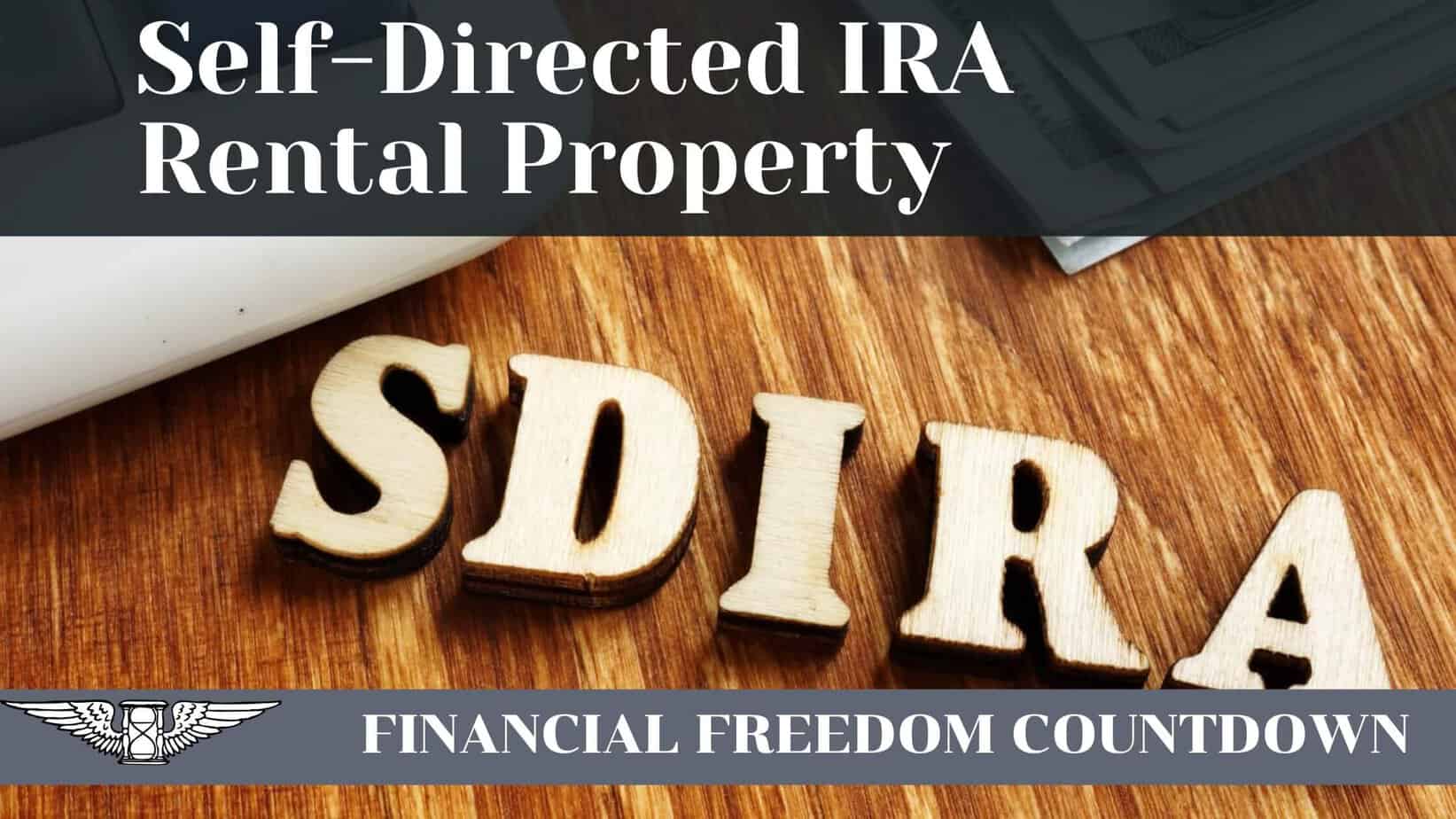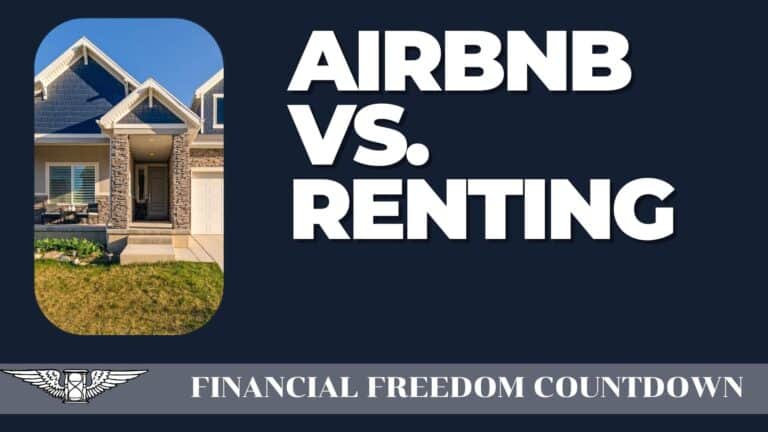Self-Directed IRA Rental Property: What You Must Know Before Investing

Are you looking for a way to invest in real estate but need more money? Yes, there are ways to invest in real estate with little or no money, but they require a lot of sweat equity.
Since most Americans have most of their savings in tax-sheltered accounts, using the money in the IRA to fund real estate investments is one option. A Self-Directed IRA (SDIRA) offers a unique avenue for investing in real estate, extending beyond traditional stocks, bonds, and mutual funds.
However, Self-Directed IRA rental property investing is complicated.
This comprehensive guide will unravel the challenges of using your Self-Directed IRA (SDIRA) for rental property investment and the pros and cons of this approach.
What Is a Self-Directed IRA?
IRAs are standard vehicles for retirement, allowing for tax-free contributions (traditional IRAs) or tax-free withdrawals (Roth IRAs). However, IRAs allow investments to grow tax-free, meaning there are no taxes on the gains within an approved IRA account.
Generally, IRAs are used to invest in stocks, mutual funds, and bonds and are more limited in investment options.
Alternative IRAs – known as self-directed IRAs – are more flexible. These IRAs are known as self-directed because they are managed directly by the account holder. In this way, individuals can use an IRA to make alternative investments, allowing them to gain critical diversification within their investment accounts.
Self-directed IRAs can include investments in cryptocurrency, precious metals, gold, commodities, and real estate investments.
Note that even Self-directed IRAs cannot invest in life insurance and collectibles as per the Internal Revenue Service rules.
What Is a Real Estate IRA?
A real estate IRA is a self-directed IRA designed explicitly for holding real estate investments.
With a real estate IRA, you can own various properties, including raw land, condos, single and multi-family homes, commercial properties, apartment buildings, mobile homes, real estate notes, and more.
Steps To Use an IRA To Invest in Real Estate
Pick a Custodian
First, you must use a custodian approved by the IRS to manage this Self-directed IRA. This means that the company or individual in question will be responsible for holding and administering the assets in the account. You must pay a fee to use these services, and you can’t do it yourself.
A checkbook LLC without involving your SD IRA provider could save costs, but it has compliance challenges.
Decide on the IRA Type
Real estate investors can acquire real estate using self-directed accounts, such as a Traditional IRA, Roth IRA, or Individual 401(k).
Traditional IRAs are funded with pre-tax money
Roth IRA with post-tax money
Individual retirement accounts are available to small business owners, also known as Solo 401(k).
Fund the IRA
After establishing a real estate IRA, allocating funds to your account is necessary, usually by transferring from an existing IRA.
You can transfer your existing IRA funds to the same type of Self-directed IRA without tax implications. But if you are moving funds from a traditional IRA to a Self Directed Roth IRA, you must pay taxes before funding the Real estate IRA.
Purchase the Rental Property
You can purchase real estate after the cash is available in the Self-directed IRA. The property must be titled under your IRA’s name.
A mortgage is an option if you do not have sufficient cash to buy the rental property. The most challenging part is getting a mortgage on the property since most banks would not lend to a Real Estate IRA.
For your real estate investments to be held by your SDIRA, it is not permissible to utilize a mortgage based on your personal credit. Instead, you must use a non-recourse loan, which guarantees that in the event of default by your IRA, the lender’s sole recourse is to initiate foreclosure proceedings on the real estate utilized as collateral.
You should resort to creative financing if you do not have the funds to purchase the property without a loan. Seller financing would be your best bet.
Follow the Rules on Real Estate Usage
Next, remember that only investment properties can be used to generate income for your IRA. You can’t use the home at all and can only use it to generate rental income.
You are not able to stay in the home at any point, use it as a vacation home, or have a close relative living in the house.
Make All Transactions Within the Self-Directed IRA
Furthermore, you will have to hold the mortgage within the IRA, and that’s separate from you. The mortgage will then be paid out of the IRA.
The difference between your finances and the IRA is essential. Generally speaking, there are a variety of favorable tax deductions associated with owning a home, including taking deductions for property taxes, mortgage interest, and more. None of these are available since the IRA owns the house.
This unquestionably limits the positives of owning real estate within your IRA and may make you consider alternatives to this form of real estate investing.
Any real estate in this IRA would then be able to collect rents and market, with all profits being used for the IRA.
All expenses, including marketing a vacant property or repairs, must come directly from the IRA.
Any profits from the sale of the real estate property would also go into the IRA. You wouldn’t have to pay taxes on the sale of property held inside the IRA.
You would only pay taxes when you began to draw down the IRA, depending on the IRA’s specific composition. You would get tax-free growth within the IRA.
Pros of Using an IRA To Buy a Rental Property
Using a real estate IRA to fund your retirement has many benefits.
Tax Shelter for Income
Self-directed IRAs often allow individuals to access tax benefits they wouldn’t otherwise be able to use. One of the most significant drawbacks to real estate is that you usually have to pay taxes on rental income. Thanks to a self-directed real estate IRA that may not be the case, depending on the exact tax makeup of the IRA in question.
Tax Shelter for Price Appreciation
Real estate in major cities has appreciated considerably in the last few decades. When selling, you must pay capital gains taxes on the investment property. Selling the rental property within a Self-directed retirement account ensures the real estate investor shelters the profit from taxes.
Diversification in IRA
Self-directed IRAs allow individuals to gain significant diversity among income-producing assets. Stocks, mutual funds, and other traditional financial mechanisms often crash together. By using a self-directed IRA that relates to real estate, you can diversify your retirement portfolio in a very significant way.
Stronger Creditor Protections
Retirement accounts have strong creditor protections from lawsuits. Like any other IRA, a self-directed IRA is protected under federal and state bankruptcy laws.
While having umbrella and landlord insurance for your real estate holdings is always a good idea, having rental properties in retirement accounts could be beneficial.
Cons of Using an IRA To Buy a Rental Property
Harder To Finance
A fixed-rate mortgage loan is the best inflation hedge. Buying a rental property in a retirement account is harder to finance. Also, you would face potential tax issues due to financing, known as unrelated business income tax (UBIT). A Solo 401(k) plan might be exempted from unrelated debt-financed income (UDFI)taxation.
Additional Complexities
A regular real estate purchase in a traditional IRA or Roth IRA adds complexity to your retirement plan. You must ensure that your actions do not violate the prohibited transactions rule. You must also ensure that a disqualified person is not hired as a property manager receiving compensation.
As a real estate investor, you or a disqualified person cannot perform any maintenance on the property, such as cleaning between tenants, mowing the lawn, replacing light bulbs, etc. Neither can you do any minor repairs.
A third party must do everything and must be paid from the IRA.
Expenses To Be Funded by the IRA
Real estate investing involves risks. Sometimes the expenses in a given year are more than the income generated. If your cash flow is low and the Self-directed IRA rental property needs money for repairs, you cannot transfer funds from your personal accounts to perform the repair.
Your IRA balance should have adequate funds allocated in reserve to cover operational expenses and capital repairs, such as roof replacement, HVAC, etc.
If maintenance or significant expenses are associated with the real estate, you must pay them out of the IRA. If you can’t, you may have a considerable problem. Furthermore, any cash the IRA withdraws for maintenance is money you lose and can’t use for retirement.
You can still make annual cash contributions to the IRA from earned income but are subjected to the standard yearly limits of IRAs.
Loss of Tax Benefits
Real estate has several tax advantages, such as deferred capital gains tax using 1031 exchanges. The rental properties can be put in a revocable living trust ensuring your heirs receive the step-up tax basis creating generational wealth.
If you do not have a revocable living trust consider Trust & Will. They provides state-specific trusts for the protection and transfer of your most important financial assets. You can also nominate legal guardians for your children to make sure they are looked after by someone you know and trust, in case something happens to you.
Suppose your property for investment purposes is instead in a retirement account. In that case, your heirs must deal with the required minimum distributions since the Stretch IRA was eliminated as part of the SECURE Act. Unfortunately, the passage of SECURE Act 2.0 did not reverse the Stretch IRA elimination.
Also, since the IRA doesn’t pay taxes, you lose several deductions associated with owning real estate.
Custodian Expenses
Regrettably, several leading IRA custodians do not offer services for real estate IRAs. It is important to note that custodians specializing in real estate IRAs usually have higher fee structures than regular IRA custodians. Therefore, it is crucial to consider and factor in these costs.
Loss of Monthly Income
Real estate investors who want to retire early rely on rental property income to fund their lifestyle. Rental properties are an excellent investment for monthly income. But if real estate assets are in a tax-sheltered account, the payment is not available for monthly consumption.
Can’t Live in It
Buying real estate in a self-directed IRA is only for investment purposes. You and your relatives can never live in any of these properties.
House hacking is one of the best ways to learn the basics of being a landlord. But now you cannot live in one of the units in a small multi-family property since you are a disqualified person.
The IRA can’t purchase the property you already own or from a disqualified person. Doing so is a form of self-dealing and is explicitly banned by the IRS. Everything needs to be an arm’s length transaction.
Best Uses of Self-Directed IRA for Real Estate
Since rental property in an IRA has complications, here are two potential alternatives for a Real Estate IRA
Flipping Properties
Flipping properties does not get the tax advantages of real estate since it is considered active, and the timeframe involved results in short-term capital gains taxed at a higher rate.
Using the real estate IRA to fund the flips could be a potential option.
Funding Notes
Hard money lending generates a lot of cash flow at a high-interest rate. Taxes on interest income is high. Using an IRA investment account to lend money with mortgage notes could benefit most real estate investors.
Should You Use a Self-Directed IRA for a Rental Property?
As the stock market continues to be volatile, more and more retirees are looking for alternative assets to their current investment plans. Chief among those potential alternatives: Using an individual retirement account (IRA) to fund real estate investments. The concept is a new and potentially alternative way of using retirement savings to own real estate.
Is it a wise idea?
Well, maybe. But it’s likely something you only want to consider under certain circumstances.
While you may know an area intimately – including rental properties, real estate, real estate investment, and more – that doesn’t necessarily mean it is a good idea to invest your retirement funds in this arena, particularly at the expense of more traditional stocks or bond investments.
Using a self-directed IRA as part of your overall personal finance and retirement strategy can be risky. It can be far too easy to overestimate your ability to make gains and manage losses.
Keep in mind that there is a slew of compliance concerns. Any IRA investments must be made in line with IRS regulations and with an IRS-approved custodian to get the full tax benefits that typically come with a self-directed IRA.
In other words, being a savvy real estate investor and knowing how to evaluate rental properties and generate rental income isn’t enough. You must also understand how to operate a self-directed IRA in compliance with existing laws.
Seeking the advice of a certified financial planner or tax advisor to manage compliance and tax breaks could be profoundly beneficial. When managed properly, a self-directed IRA can be an excellent vehicle for real estate investments.

John Dealbreuin came from a third world country to the US with only $1,000 not knowing anyone; guided by an immigrant dream. In 12 years, he achieved his retirement number.
He started Financial Freedom Countdown to help everyone think differently about their financial challenges and live their best lives. John resides in the San Francisco Bay Area enjoying nature trails and weight training.
Here are his recommended tools
Personal Capital: This is a free tool John uses to track his net worth on a regular basis and as a retirement planner. It also alerts him wrt hidden fees and has a budget tracker included.
Platforms like Yieldstreet provide investment options in art, legal, real estate, structured notes, venture capital, etc. They also have fixed-income portfolios spread across multiple asset classes with a single investment with low minimums of $10,000.





